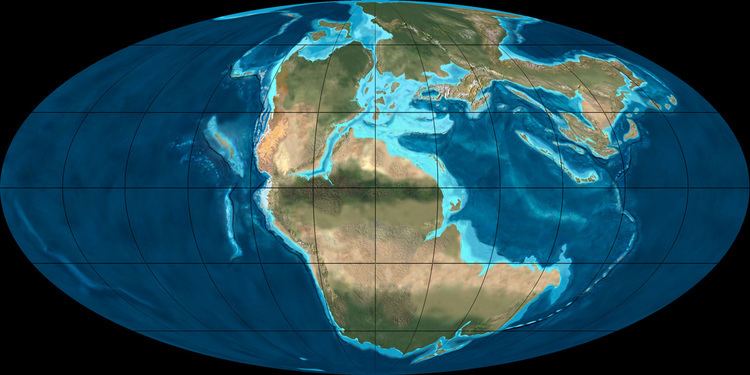 | ||
The Toarcian is, in the ICS' geologic timescale, an age or stage in the Early or Lower Jurassic. It spans the time between 182.7 Ma (million years ago) and 174.1 Ma. It follows the Pliensbachian and is followed by the Aalenian.
The Toarcian age began with the Toarcian turnover, the extinction event that sets its fossil faunas apart from the previous Pliensbachian age.
Stratigraphic definitions
The Toarcian takes its name from the city of Thouars, just south of Saumur in the Loire Valley of France. The stage was introduced by French palaeontologist Alcide d'Orbigny in 1842, after examining rock strata of this age in a quarry near Thouars.
In Europe this period is represented by the upper part of the Lias.
The base of the Toarcian is defined as the place in the stratigraphic record where the ammonite genus Eodactylites first appears. A global reference profile (a GSSP) for the base is located at Peniche, Portugal. The top of the stage is at the first appearance of ammonite genus Leioceras.
In the Tethys domain, the Toarcian contains the following ammonite biozones:
